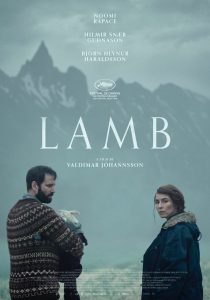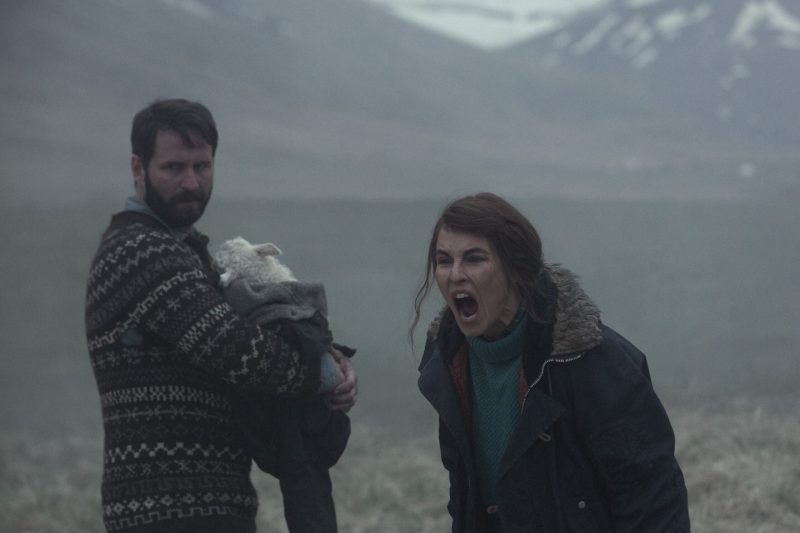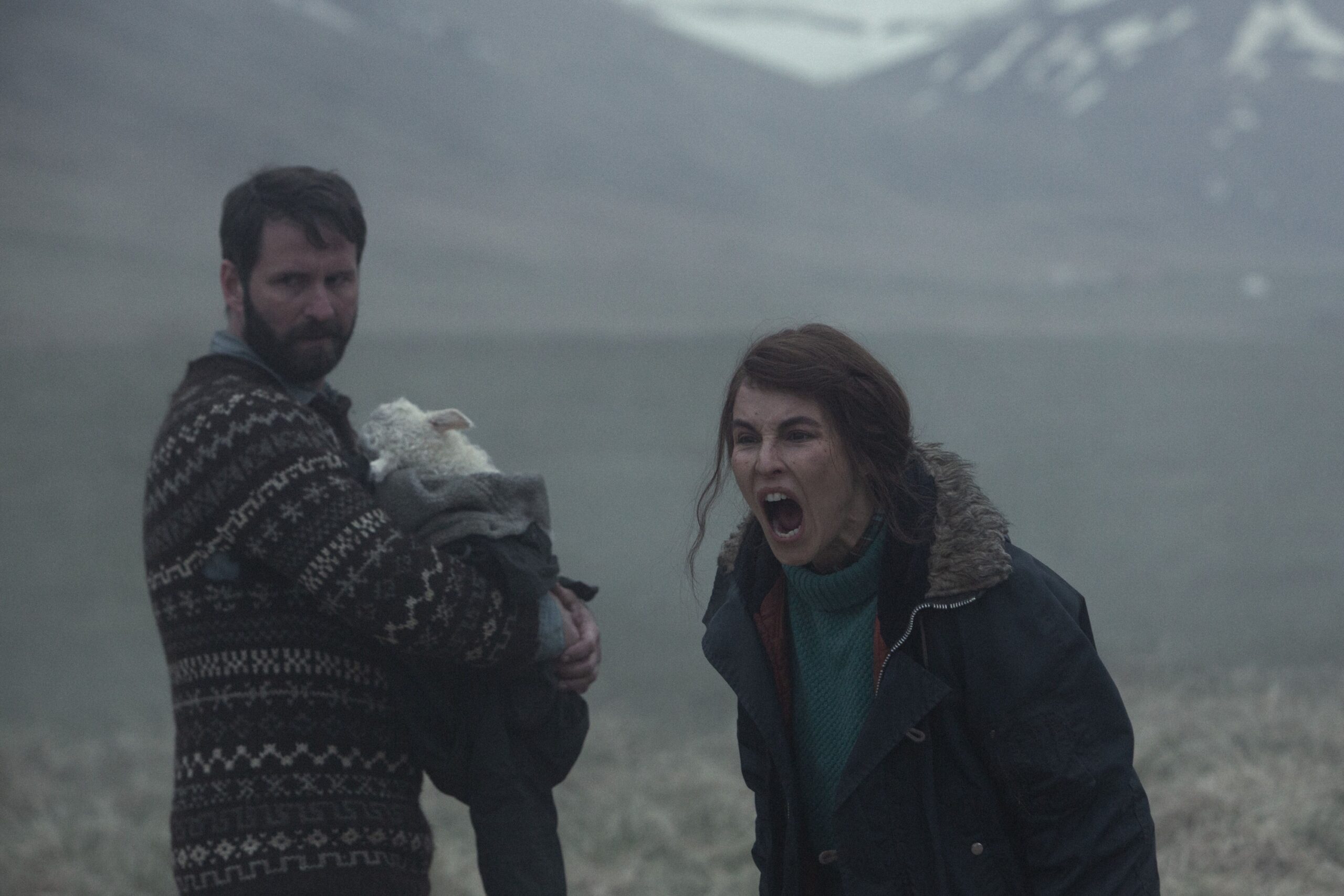
A rural farming couple deal with the fallout of the birth of a new sheep in Lamb.
Ingvar (Hilmir Snær Guðnason) and Maria (Noomi Rapace) live a solitary existence surrounded by the stunning beauty of pastoral Iceland. Their simple needs are provided for by working a small farm and tending to a flock of sheep.
It’s a seemingly idyllic life as viewed from a distance, but up close, there’s an emptiness in the isolation that they both share. One day, all of that changes with the birth of their latest lamb. The couple quickly gains an attachment that might seem like a small miracle to them, but just may turn out to be a large nightmare.
This is a folktale that starts off wrong and revels in its decision to stay that way. Almost nothing about the film works, aside from its captivating natural location. The trouble starts off with an extemely ambiguous opening scene that fails to impart critical information. It’s only in the film’s final moments that you realize that you’ve missed something major.
What might have been quirky in a short film turns into a tedious battle of endurance. You watch the couple cook a full meal, plow their fields, stare out windows, shower, get dressed and slowly wash what feels like every dish in their kitchen.
Even the fact of it being a folktale is something that you only grasp far too late in the film. Writer/director Valdimar Jóhannsson could have done his latest work wonders by coupling it with a thematic opening narration a la Pan’s Labryrinth. Without it, you end up assuming some supernatural element has unceremoniously befallen the poor couple.
The film also suffers from two choices that pulled me out of the story throughout. The CGI involving the titular lamb is more laughable than convincing. The second issue is that the actor playing Ingvar bears a distracting uncanny resemblance to deceased comedic actor John Ritter. I kept waiting for Jack’s two female roomates to emerge from the barn at any moment.
Worst of all, it utilizes a storytelling tactic that I vehemently object to in any film. This is another story where the characters all know something that’s purposely hidden from the viewer. It’s the equivalent of a cheap jump scare in a horror film. Jóhannsson takes 39 minutes to reveal a big secret that shouldn’t have been a secret at all. The failure of the opening scene then leads you down a totally unnecessary, awkward path that ruins much of the rest of the story.
Let me give you an example of the right way to hide information. One of my favorite independent films involves a widow who encounters a stranger at her dead husband’s grave. The stranger holds a deep, dark secret about his involvement with her husband. There’s absolutely nothing wrong with hiding the stranger’s secret because your main view is from the perspective of the widow. You experience the world as she does and shouldn’t yet know what the stranger knows. The only reason that writers hide everything from you is when they’re unable to tell a compelling story without such a crutch. In this case, there are two crutches, several casts and a traumatic brain injury of a cheap stunt.
I left the film knowing that there aren’t shears sharp enough to clean up this messy flock.



